Sound Waves
The Ancient WorldSound is a vibrating wave of energy moving through air, water, or some other medium. To visualize this, consider the motion of a pendulum.
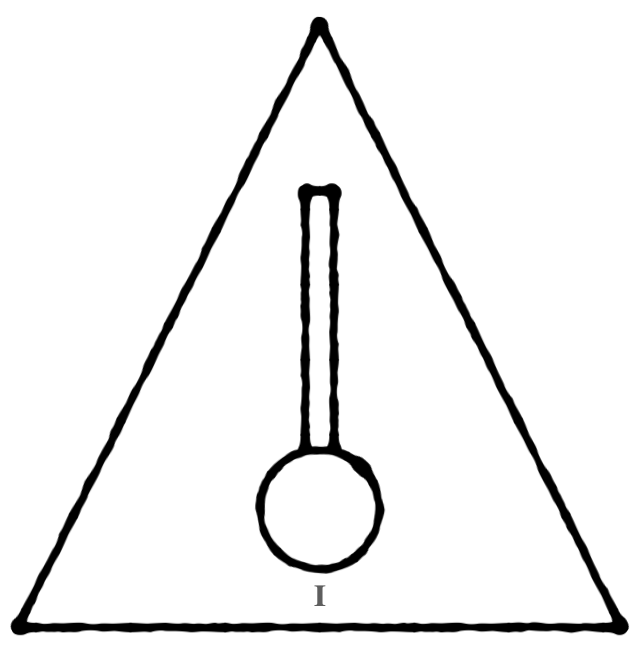
It initially hangs at rest (position I) in a state called equilibrium.
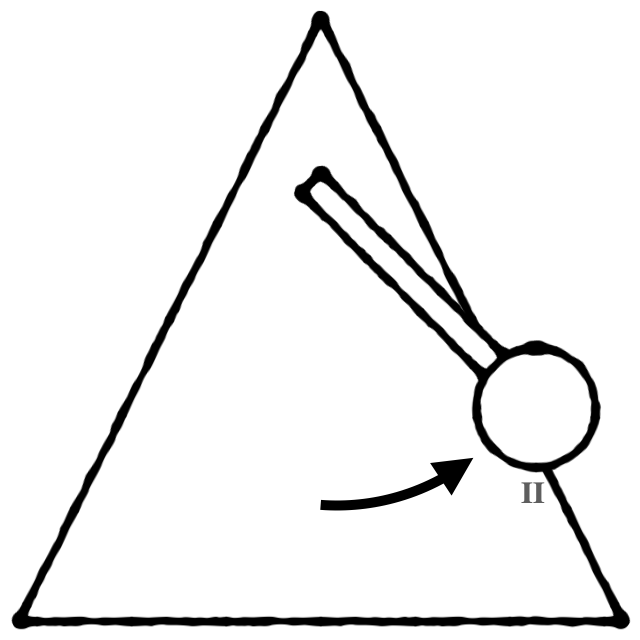
If pulled to the side (position II), it now has a certain amount of potential energy.
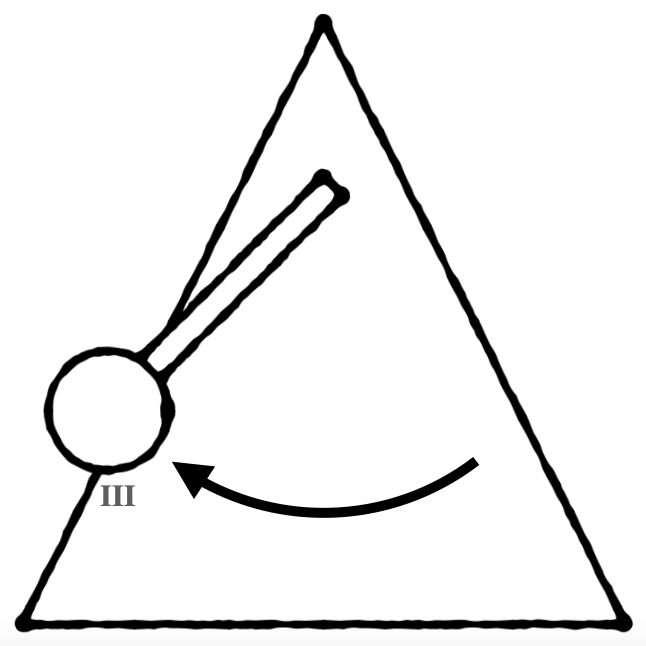
When released, its potential energy becomes kinetic energy, and returns it to position I. However, momentum moves it past equilibrium, until gravity stops in position III with kinetic energy equal to position II.
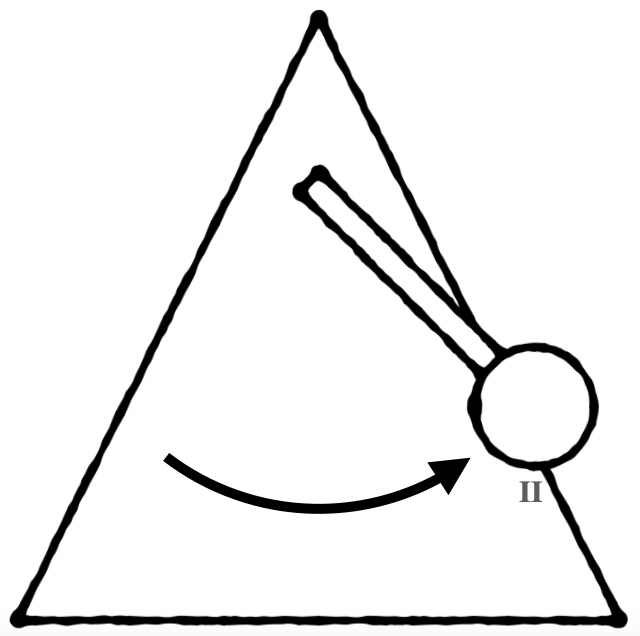 The cycle then repeats, as the potential energy of position III becomes kinetic energy, swinging the pendulum once more past equilibrium and back into position II.
The cycle then repeats, as the potential energy of position III becomes kinetic energy, swinging the pendulum once more past equilibrium and back into position II.Graphing the location of the pendulum over time will result in a wave.
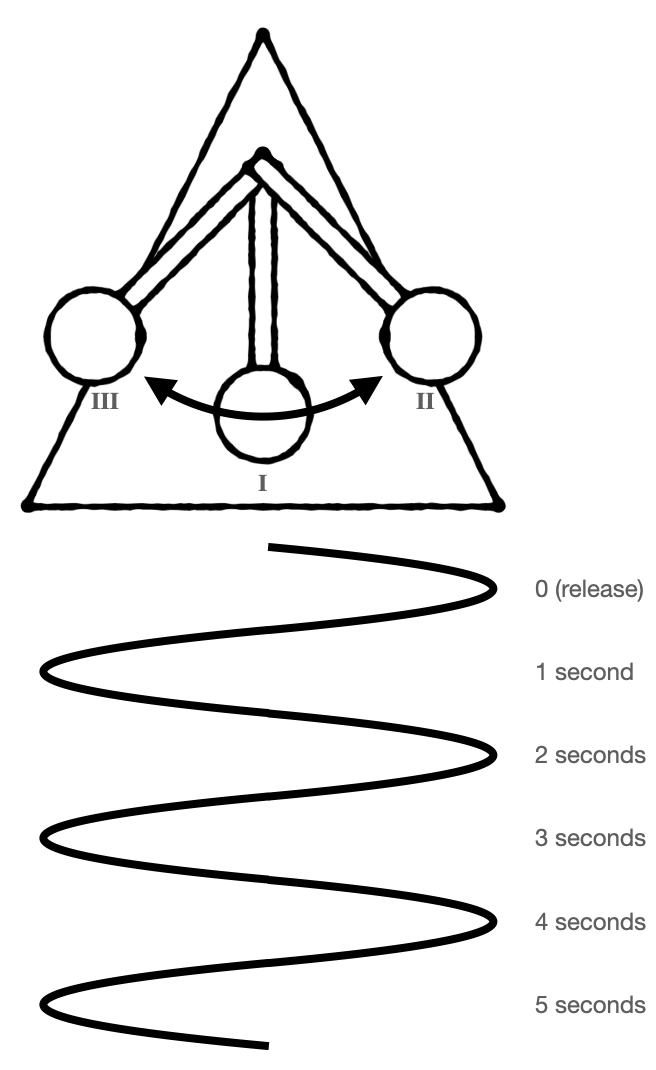
This same type of motion occurs when energy passes through air, water, or some other physical medium, and the resulting phenomenon is called sound. The energy of a sound wave pushes molecules out of equilibrium, their resting location, until they impact the molecules surrounding them and are pushed back. Their momentum carries them past equilibrium until they are pushed back by the molecules on the other side. In a sound wave, Position II is called a crest and Position III is called a trough.
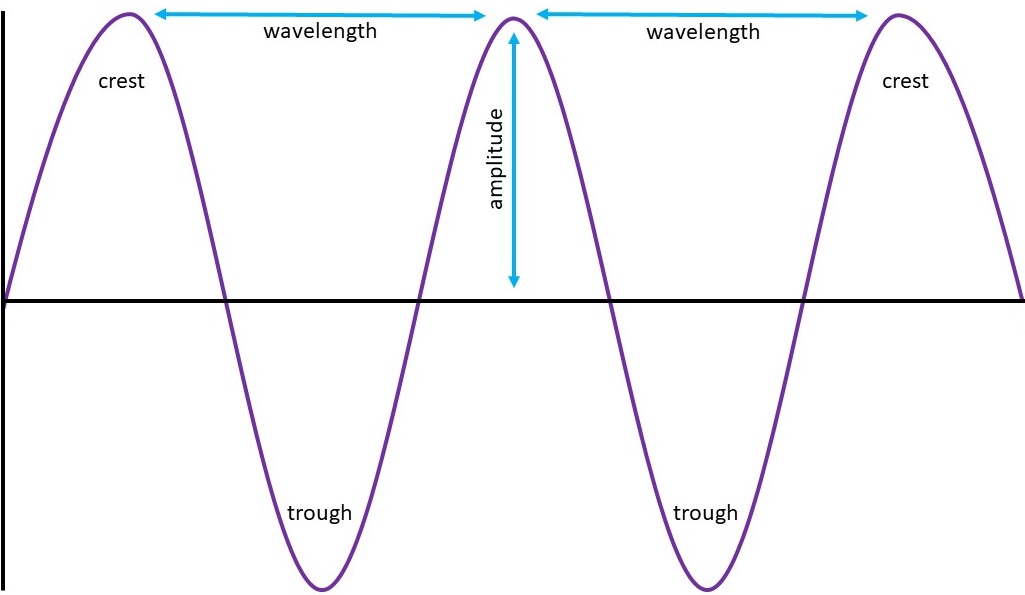
The distance from the resting point to a crest or trough is called the amplitude, or in music, the volume. The distance from crest-to-crest or trough-to-trough is called the wavelength. The amount of time it takes the wave to traverse one cycle (a full wavelength) is called a period, and the number of cycles per second is described as the frequency, or in music, the pitch.
Technically, sound has been present since the very beginning of the universe. About 13.7 billion years ago, the universe exploded out from a single point in what scientists call the Big Bang. The idea was controversial when it was first proposed by a Belgian priest named Father George Lemaître in 1927, but soon Edwin Hubble and Albert Einstein were defending the idea and it’s today almost universally accepted by cosmologists and astrophysicists. Since science works by observing the universe and collecting empirical data, and you can’t actually have any empirical data from before there was a universe to observe, nobody actually knows how this happened. Nevertheless, however it came about and whoever the Big Banger was, astrophysics can tell us some very interesting facts about those first few moments after the universe began. And one of those facts is what it sounded like.
In 2013, the European Space Agency’s Planck Orbital Observatory recorded recurrent patterns of slightly brighter and darker patches in the light of the observable universe. Astrophysicists concluded that they were likely the remnants of compression waves - in other words, sound - traveling through the superheated plasma of the young universe shortly after the Big Bang. These sound waves have been expanding since the beginning of the universe, and they are massive, with a wavelength of 430,000 light-years, which would be like flying from New York to London 730 trillion times. Since that’s so far beyond the range of human hearing, researchers compressed the wave until the pitch was audible. To do this, they multiplied the wave’s frequency by a factor of one quadrillion, 125 trillion, 899 billion, 906 million, 842 thousand, six hundred twenty, raising the pitch fifty octaves. (For reference, a grand piano covers just over 7 octaves from the lowest note to the highest.) In this range our ears can detect, we can hear the sound of the newborn universe just moments after its creation.
